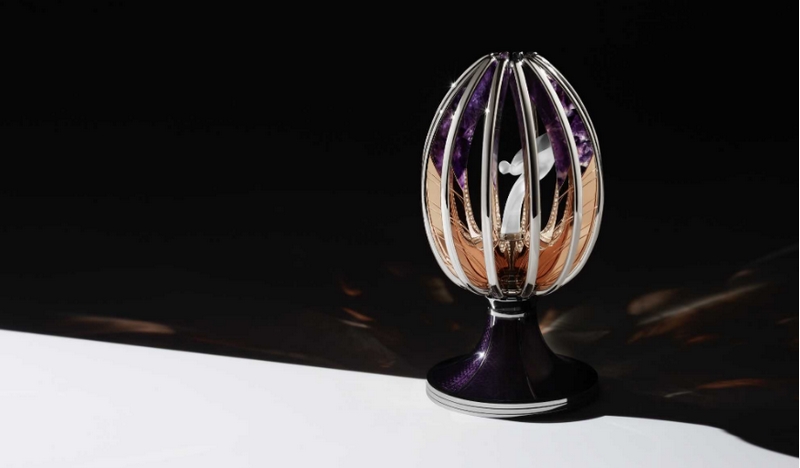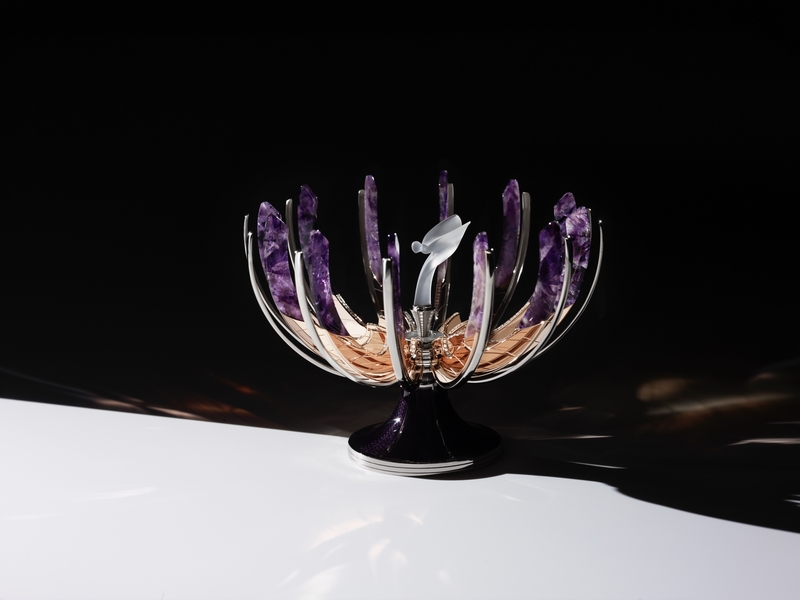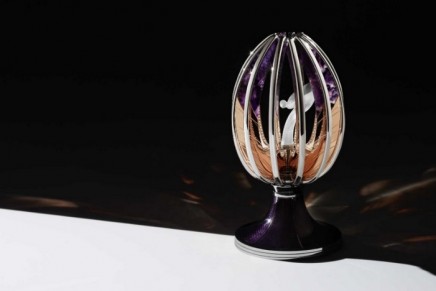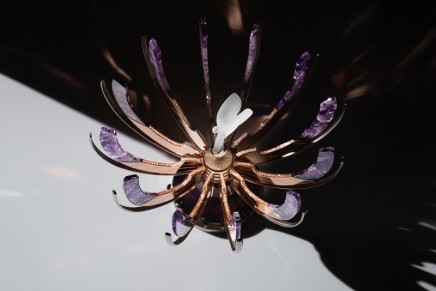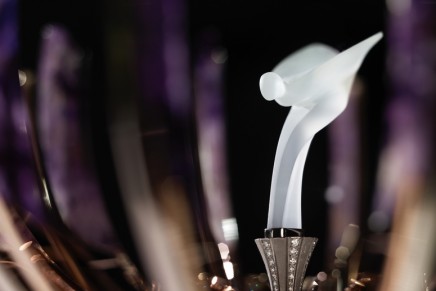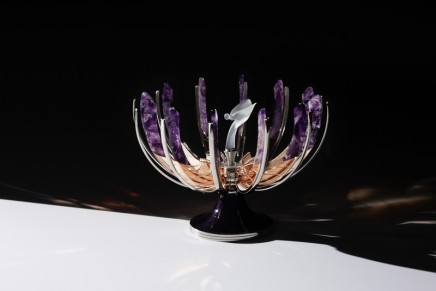With just 50 pre-1917 Faberge Imperial Eggs completed, these exceptionally precious creations are some of the most valuable and coveted objects ever to have been made.
‘Spirit Of Ecstasy’ Bejeweled Egg
Two of the world’s most esteemed houses of luxury have joined forces to create one unique objet d’art, for one discerning patron.
For the first time in history, an iteration of the Spirit of Ecstasy, the enigmatic mascot that has adorned Rolls-Royce motor cars since 1911, is cocooned in an exquisite, contemporary, Fabergé Egg. The design, conceived by Rolls- Royce Designers Stefan Monro and Alex Innes and rendered by Fabergé Lead Designer Liisa Tallgren, has been brought to life by Fabergé workmaster Paul Jones. The Egg is destined for the residence of a great collector of both brands.
This ‘Spirit of Ecstasy’ Fabergé Egg, the second to be commissioned in the ‘Imperial Class’ since 1917 – a category reserved only for Fabergé’s most illustrious creations – celebrates the history, heritage and legend for which both Rolls-Royce and Fabergé have been revered over more than a century.
The Egg rests on an engine-turned, hand-engraved, purple enamel guilloché base of 18 karat white gold. Arms of rose gold define the shape of the Egg, acting as a protective chamber for the Egg’s precious inhabitant. Upon operating the movement via a discreet lever at the base of the stand, a sense of theatre ensues as the boughs open to present the fine figurine of the Spirit of Ecstasy, hand-sculpted in frosted rock crystal.
The rose gold vanes, embellished with nearly 10 carats of round white diamonds, resolve into swathes of natural amethyst weighing over 390 carats.
“’The Spirit of Ecstasy’ Fabergé Egg was born from an intrinsic desire to further the realms of Bespoke personalisation,” commented Torsten Müller-Ötvös, Chief Executive Officer, Rolls-Royce Motor Cars.
“Responding to the continuing demands of patrons in search of unique and cherished possessions, a designer at the House of Rolls-Royce sketched an Egg, igniting a fascination that will undoubtedly become one of the most collectable items of modern times,” added Müller-Ötvös.
A team of seven craftspeople from Fabergé undertook the challenge of fabricating the design. At first glance, the Egg is unmistakable in its character. Design cues from Fabergé’s heritage are masterfully woven into the intricate design which stands at 160mm and weighs just 400g, with the Egg harnessing the ‘surprise and delight’ attributes for which Imperial Eggs are celebrated.
Fifty Imperial Easter Eggs were created for the Russian Imperial family between 1885 and 1916. These creations are inextricably linked to the lives of the Romanov family. Ten Eggs were produced from 1885 to 1893 during the reign of Emperor Alexander III; a further 40 were created during the rule of his dutiful son, Nicholas II, two each year – one for his mother the dowager, the second for his wife. If we explore the great archives of Rolls-Royce, we find that Tsar Nicholas II was indeed also a patron of Rolls-Royce Motor Cars.
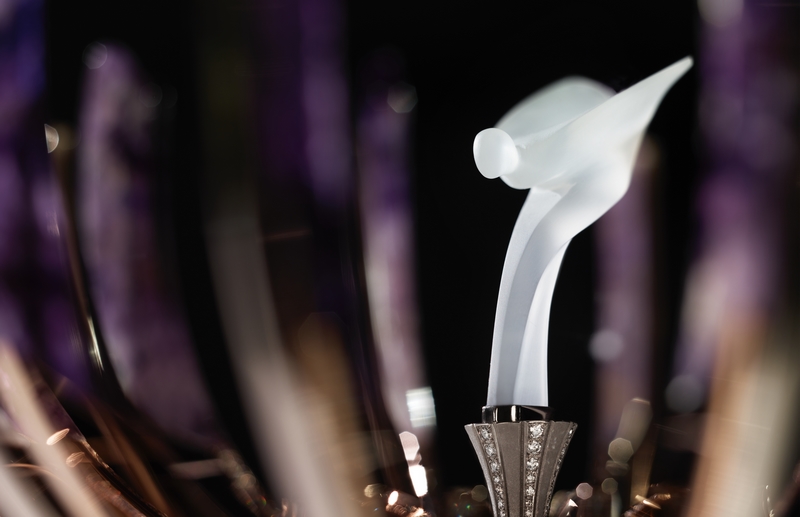
Rolls-Royce -Fabergé Egg; photos: rollsroycemotorcars
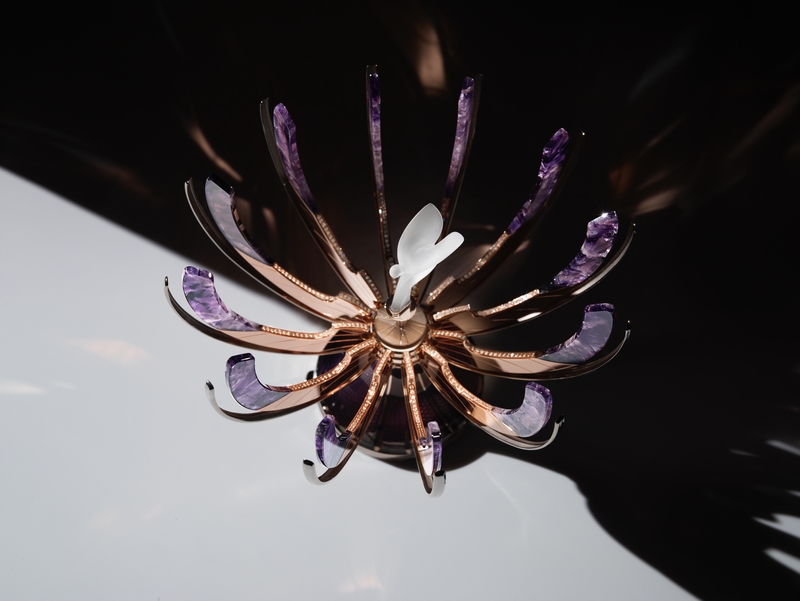
Rolls-Royce -Fabergé Egg; photos: rollsroycemotorcars

